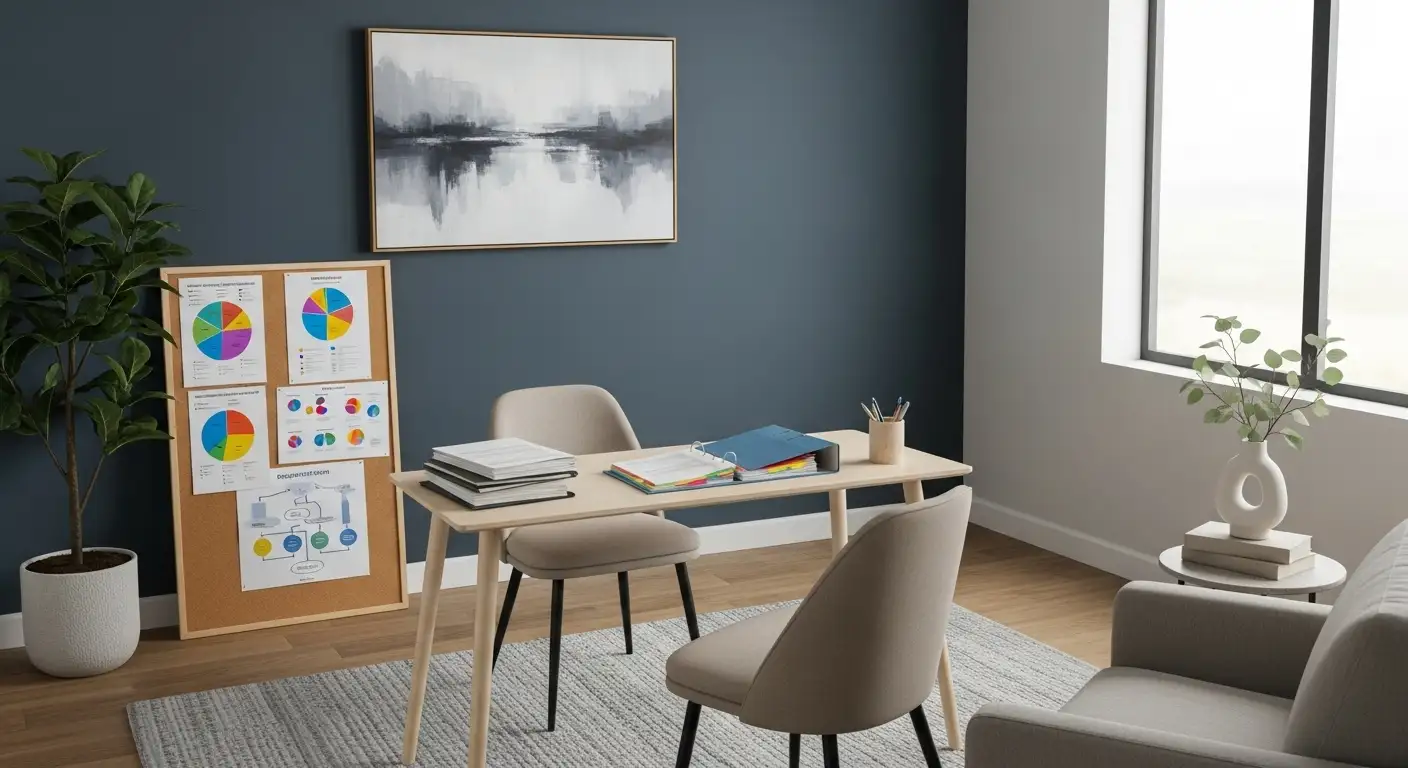Understanding Sensory Overload
Understanding sensory overload is crucial for parents of children diagnosed with autism spectrum disorder (ASD). This condition can significantly affect their daily experiences and overall well-being.

Causes of Sensory Overload
Sensory overload happens when the brain receives more information from the environment than it can process effectively. This can be triggered by various stimuli, including:
Sensory TriggersExamplesAuditory SensitivityLoud noises, sirensVisual SensitivityBright lights, busy patternsOlfactory SensitivityStrong smells, perfumeTactile SensitivityCertain textures, clothing tagsEnvironmental FactorsCrowded spaces, chaotic environments
Individuals with autism may experience hypersensitivity or hyposensitivity to these stimuli, leading to challenges in processing sensory information. Common triggers include loud noises, bright lights, strong smells, crowded environments, or certain textures.
Impact on Individuals with Autism
The effects of overstimulation can manifest in various ways for individuals with autism. Exposure to overwhelming sensory input can lead to emotional and physical distress, including:
For many, these experiences can feel like an overwhelming flood of sensory input, which may lead to physical discomfort or pain. It’s crucial to recognize these challenges in order to better support children with autism in navigating their sensory environments.
Understanding these factors can empower parents to create strategies and environments that minimize overstimulation. For further information on coping mechanisms, parents can explore related resources or consider options like ABA therapy to tailor support for their children's needs.
Signs of Overstimulation
Understanding how overstimulation manifests can be vital for parents of children diagnosed with autism. Recognizing the signs can lead to better strategies for support and intervention.
Behavioral Indicators
When a child experiences overstimulation, they may exhibit specific behavioral indicators that signal their discomfort. These behaviors can vary widely among individuals, but common indicators include:
Behavioral IndicatorDescriptionIncreased AggressionThey might lash out or show frustration.WithdrawalThey may retreat to a quiet space, showing disinterest in surroundings.Self-HarmBehaviors like head banging, ear-clapping, or scratching might occur.MeltdownsEmotional outbursts can happen when overwhelmed.Repetitive BehaviorsSuch as rocking or hand-flapping, which may intensify during stress.
Sensory overload occurs when the brain receives more information from the senses than it can handle effectively, leading to feelings of irritability and emotional distress.
Physical Signals
Along with behavioral signs, children may also display physical signals when experiencing overstimulation. These physical symptoms can include:
Physical SignalDescriptionRapid BreathingThey may breathe quickly due to anxiety or stress.SweatingIncreased perspiration can occur in response to overload.Clenching FistsTension in the body may manifest physically.Red or Flushed FaceThis may occur due to stress or emotional upset.PacingThey might move around restlessly in an attempt to self-soothe.
Sensory issues can create anxiety and stress for children with autism, making them wary of places or activities they find overwhelming due to specific triggers. Understanding these indicators can empower parents to create a supportive and understanding environment for their children.
Coping Strategies
Coping with overstimulation is essential for individuals with autism! By implementing effective strategies, parents can help their children manage sensory overload and promote a sense of calm. Here are some helpful approaches to consider:
Self-Regulation Techniques
Self-regulation techniques empower children with autism to manage their responses to sensory overload. Techniques such as stimming, deep breathing, and isometric exercises can be particularly beneficial.
Implementing these self-regulation techniques can help children respond more calmly to overwhelming situations, reducing feelings of irritability and emotional distress [2].
Sensory Tools and Toys
Using sensory tools and toys can create a calming environment for children with autism, helping to mitigate the effects of sensory overload. These items can provide comfort and distraction during stressful moments. Here are some popular options:
Sensory Tool/ToyPurposeFidget SpinnersHelps with focus and motor skillsNoise-Canceling HeadphonesReduces loud noises, promoting calmWeighted BlanketsOffers a calming sensation through pressureStress BallsProvides a physical outlet for stress reliefTactile Toys (e.g., squishy toys)Engages touch and offers comfort
Incorporating sensory-friendly tools into daily routines can greatly assist in managing overstimulation. Consider exploring different options to find what works best for your child.
Additionally, creating a sensory-friendly environment at home can make a significant difference. Parents can designate calming spaces where children can retreat during overwhelming situations, providing a safe haven to practice self-regulation techniques. For more tips on creating supportive environments, check out our article on housing grants for families with autism.
By utilizing self-regulation techniques and sensory tools, parents can empower their children to navigate the emotional and physical challenges associated with overstimulation effectively.
Creating a Supportive Environment
Creating a supportive environment is crucial for individuals with autism, particularly when managing sensory overload. By designing sensory-friendly spaces and engaging in sensory-friendly activities, parents can make a significant difference in their child's comfort and well-being.
Sensory-Friendly Spaces
A sensory-friendly space is an area designed to minimize distractions and provide a calming atmosphere. This type of environment can help reduce overstimulation and offer a retreat for individuals needing a break.
Key features of sensory-friendly spaces may include:
FeatureDescriptionDim LightingSoft, adjustable lighting can reduce glare and harshness.Quiet ZonesDedicated areas free from noise can promote relaxation.Soft TexturesCushions, rugs, and blankets can provide comfort.Minimal DecorSimplifying the space can reduce visual overload.Calming ColorsUse soothing colors like soft blues or greens to foster tranquility.
Creating such spaces allows individuals with autism to retreat when feeling overwhelmed, enabling them to self-regulate effectively. Creating these environments can significantly improve their ability to manage sensory input.
Sensory-Friendly Activities
Engaging in sensory-friendly activities can support individuals with autism in exploring their environment while minimizing overstimulation. These activities often incorporate various sensory experiences that help individuals focus and feel grounded.
Some examples of sensory-friendly activities include:
ActivitySensory BenefitsFidget ToysProvide tactile stimulation and help focus.Deep Breathing ExercisesHelp calm the mind by increasing oxygen flow to the brain.Isometric ExercisesPromote physical movement without high energy, aiding self-regulation.Nature WalksOffer soothing sounds and visuals, promoting relaxation.
Parents and caregivers are encouraged to explore various options and identify which activities resonate with their child. Understanding individual needs and preferences is vital in creating personalized management plans that enhance comfort and support daily life. By fostering an environment that acknowledges sensory needs, families can empower their children to thrive.
Importance of Awareness
Understanding the unique experiences of individuals with autism is essential for better managing their sensory processing challenges. Recognizing sensory triggers and creating personalized management plans can significantly improve their daily lives.
Recognizing Sensory Triggers
Being aware of what causes sensory overload is crucial. Sensory overload occurs when the brain receives more sensory information than it can process effectively. This can lead to feelings of irritability, anxiety, and emotional distress. Common triggers for children with autism may include:
Sensory TriggerExamplesAuditoryLoud noises, sudden soundsVisualBright lights, busy patternsTactileTextures that feel uncomfortable, tight clothingOlfactoryStrong smells, perfumesCrowdsLarge groups of people, busy environments
Parents and caregivers should observe their child for signs of discomfort in various situations. This awareness can guide them in creating environments that minimize exposure to sensory overload.
Personalized Management Plans
Creating a personalized management plan is essential for helping individuals with autism navigate their sensory challenges. Such plans involve strategies to manage sensory overload and engage in self-regulation techniques. Some important components of these plans may include:
By collaborating with their child to develop a management plan that addresses individual sensory needs, parents can help reduce anxiety and enhance their child’s comfort in various environments. Resources like housing grants for families with autism can also provide support in creating accommodating living spaces.
Awareness and understanding of sensory triggers, combined with personalized management approaches, can create a supportive foundation for children with autism. Understanding these aspects will empower parents to better support their child’s unique sensory processing needs.
Research Insights
Understanding the research behind sensory overstimulation can provide valuable perspectives for parents of children diagnosed with autism. The insights gained from studies on sensory processing and neural connectivity can help shed light on what children may experience during overstimulation episodes.
Sensory Processing in ASD
Sensory processing differences (SPDs) are often associated with Autism Spectrum Disorder (ASD). These differences can lead to unusual reactions to sensory information that may vary widely among individuals. A notable finding is that over 96% of children with ASD show hyper and hypo-sensitivities across multiple sensory domains [6]. This means they may either be overly sensitive to certain stimuli or have reduced sensitivity to others, creating unique challenges in everyday settings.
Additionally, altered sensory modulation is prevalent in these individuals. They often struggle with habituating to sensory stimuli, such as sounds or light, making it hard to filter out unnecessary sensory input. This Sensory Gating Dysfunction can lead to feelings of overwhelming overstimulation. The variations in responses to sensory information can greatly impact their functional abilities and quality of life.
Sensory Processing CharacteristicsPercentage of Children with ASDHyper-sensitivity50% - 70%Hypo-sensitivity30% - 50%
Neural Connectivity and Overstimulation
Neural connectivity plays a vital role in understanding overstimulation in individuals with ASD. Research suggests that there are disruptions in both long-distance and local connections in the brain for those on the spectrum. These disruptions can contribute to behavioral and cognitive dysfunctions associated with autism [7].
When examining sensory overload, altered neural connectivity may indicate a struggle in processing and responding to external stimuli effectively. This can manifest as difficulty in attention-switching, which further complicates interactions with the environment. Atypical sensory modulation results from these neural challenges, leading to abnormal reactions to various sensory stimuli.
Understanding these aspects can help parents better recognize how overstimulation feels like for their children. Knowing that each child may respond differently to sensory experiences can assist in personalizing management plans and promoting supportive environments. For more information on creating a manageable and supportive atmosphere, you might explore housing grants for families with autism or consider aba therapy near me that accepts medicaid to access therapeutic resources.
References
[2]:
[3]:
[4]:
[5]:
[6]:
[7]:












